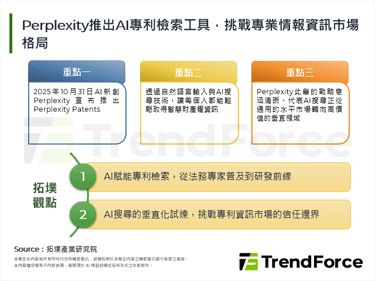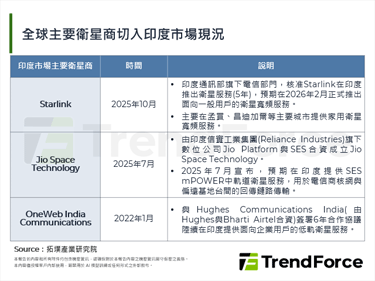China “The Eleventh Five-Year Plan for ICT Industry” Press Release
In order to raise the competitiveness of the country and its industries, once every five years the Chinese government puts forward a nationwide plan to strengthen the industries. Since the launch of The Eleventh Five-Year Plan for 2006 to 2010 in March 2006, other detail plans on industries are gradually being formulated. After a year of discussion, MII (Ministry of Information Industry of the People’s Republic of China) announced its “The Eleventh Five-Year Plan for ICT Industry” on March 1st 2007, aimed at the development of China’s Information Industry that set out a set of concrete aims, directions and development strategies.
Topology Research Institute believes that the foreign businesses can expect to benefit from the newly announced “The Eleventh Five-Year Plan for ICT Industry” along side China’s native enterprises. Besides having clearly encouraged foreign enterprises to set up R&D and operation center in China, and between the planned core industries and the development of new generation industries, it shall provide numerous opportunities to China and the foreign enterprises. This is most evident in TD-SCDMA and Integrated Circuit (IC) Industry. Take TD-SCDMA for example, there had being rumors about China Mobile shall lead the test of such standards and is already making purchase on the necessary equipments. While international firms including Nortel, Ericsson, Nokia-Siemens and Alcatel-Lucent watched with hostility as the purchases are being made. Amongst the Network Communication Manufacturers giants in China (Huawei, Datang, Potevio and ZTE), ZTE and Datang have the biggest opportunities, as ZTE is already long established in TD-SCDMA and Datang is the pioneer of the TD-SCDMA standard.
Five Stages of Development on China’s Eleventh Five-Year Plan of its Information Industry

Source: Topology Research Institute, 2007/03
China’s ICT Industry works toward 5 major targets with “Three Transformations plus one Improvement” as its pivotal thinking
In order to achieve China’s target in becoming the strong nation in ICT industry, the formulation of the “Eleventh Five-Year Plan” works in line with this goal with the “Three Transformations plus one Improvement” as its pivotal thinking. The “Three Transformations” include promoting the transformation of communication industry to information industry, promoting the benefit of an innovative transformation of IT industry, and to promote a modernization of the postal service. Its “improvement” was meant by strengthening the wireless centralized management. MII hopes to use the Three Transformations plus one Improvement as the basis for its pivotal thinking, and to work towards realizing the five major targets through seven major policy measures, implementation of twelve engineering projects and the completion of eight missions.
The five major development targets mentioned above are: (1) main economic target, (2) level of service, (3) ability to innovate, (4) competitiveness and (5) coordinated development. They can be divided into two types: concrete figures and the industry characteristics. Of which the targets of the industry characteristics are divided into industry independent innovation, the nature of industry conjugation and the coordinated development of the industries. The targets of the concrete figures are as follows:
‧The sales volume of China’s ICT industry shall reach 10 trillion RMB by 2010, with an average annual growth of 17.6%, of which the sales revenue of Communication Industry would be 886 billion RMB, an average annual growth of 7.6%; The sales revenue of IT industry will reach 9 trillion RMB with an average annual growth of 18%. Whereas the revenue of the postal service will reach 99 billion RMB with an average annual growth of 8%.
‧The increased value of ICT industry will reach 2.6 trillion RMB by 2010 with an average annual growth of 15% and makes up 10% of China’s GDP.
‧By 2010 the export volume of the IT products in 2010 will make up to 35% of China’s total export volume.
‧There will be one billion telephone users. Amongst which 400 million are landline users and 600 million cellular users.
‧China Internet Network users will reach 200 million b 2010.
Integrated Circuit (IC), New Generation of Telecommunication and Digital Audio-Visual to be China’s Three Major Development Focus
Under the Eleventh Five-Year Plan for ICT Industry, besides from the continuous development of the fundamental core industries such as IC, software, components, electronics parts and equipments, MII will also be focus on nurturing the new generation of industry group, that include digital TV products, new generation telecommunication products, computers and network products, internet security products and the development of applied electronics products. According to an observation by the Topology Research Institute, amongst the five fundamental core industries and the five major industries, IC, the new generation of telecommunication and the digital audio-visual products deserve the most attention.
‧Integrated Circuit: Will use the emphasis of self innovative IC and IC production as its core, as well as to expand the ability in packaging and equipments, shaping a comprehensive industry structure. A new semiconductor policy incentive is to be expected soon, probably in the second season of 2007.
‧New Generation of Telecommunication: While making China the globally resound R&D production base for telecommunication products, the most important mission now is to deploy and to develop TC-SCDMA. The announcement of The Eleventh Five-Year Plan for ICT Industry is just the backbone for the development of TD-SCDMA. MII will focus on the comprehensive development of the relevant industry chain in TD-SCDMA, including Baseband IC, RFIC, High Performance Batteries, Core Software and related components.
‧Digital Audio-Visual: To establish the standard for digital audio-visual products and the development policy of digital TV industry. Continue to promote the technological path of “machine card separation” and to speed up the transition time of China’s digital TV. Furthermore building a digital TV network supplementing cable, over ground and satellite that covers the whole China, forming a digital TV industry system covering key components to a more complete set.






